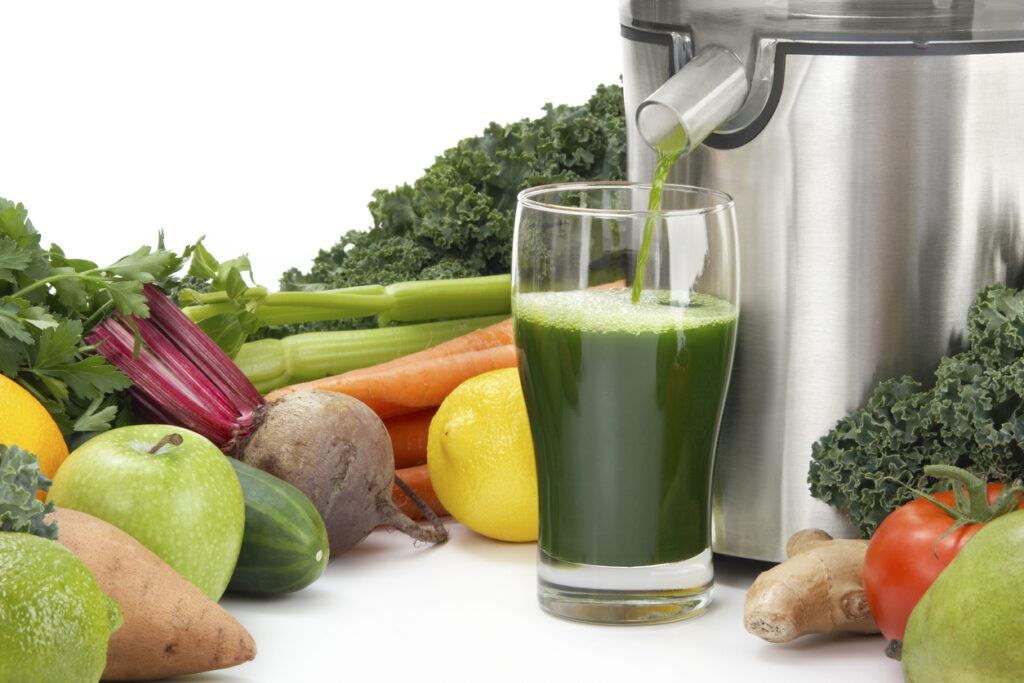Do you peel ginger before juicing? Is ginger peel healthy?
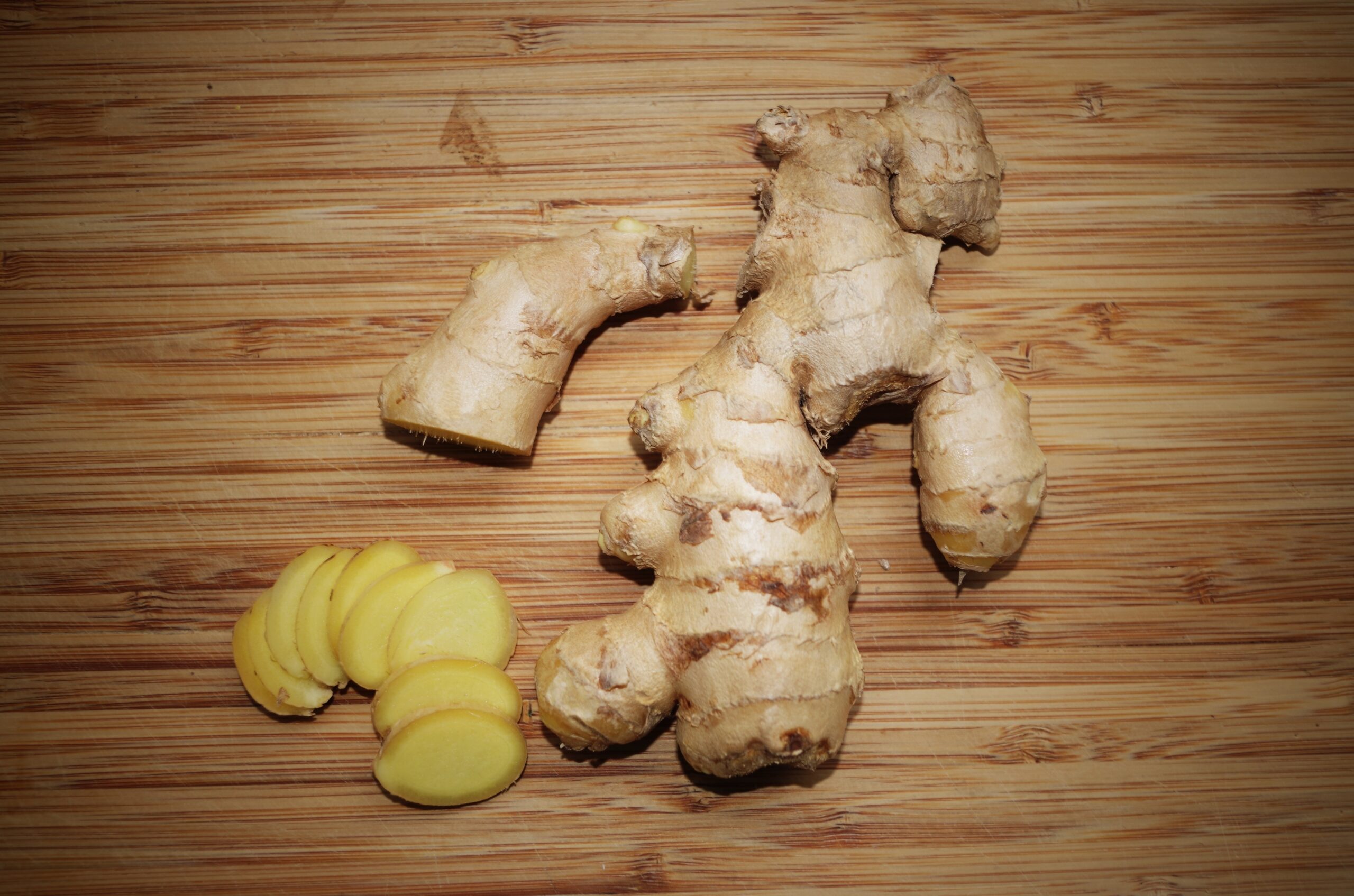
Do you have to peel ginger before juicing it? Does ginger peel offer additional health benefits? These are common questions when making a fresh juice recipe. Fresh ginger root is popular for juicing due to its impressive health benefits and its fresh, unique taste, but we need to know how to properly and safely prepare it for the juicing process and how to maximize the healthy benefits of our ginger. Read on to find out the answers to all your ginger peel and ginger juice related questions.
- Do you have to peel ginger before juicing?
- What are the health benefits of ginger?
- Is ginger peel good for your health? Does ginger peel offer extra health benefits?
- Is ginger peel bad for your juicer? What is the best juicer for ginger?
- How do you peel ginger?
- Should you buy organic ginger?
- Does Peeling Ginger change the juice flavor?
- What are some uses of ginger peel?
- How do you store ginger?
- Juice Recipes with Ginger from Each Healthy Bite
- More Information on Juicing:
Do you have to peel ginger before juicing?
Whether you should peel ginger before juicing depends on your personal preference and the type of juicer you're using. Here are some considerations:
- Texture and Flavor: The skin of ginger is thin and edible, and it adds a bit of texture and a more intense flavor to the juice. If you enjoy the slightly spicier taste and don't mind the texture, you can leave the skin on.
- Organic vs. Non-organic: If you're using organic ginger, the skin is generally safe to consume. However, if you're using conventionally grown ginger, you may choose to peel it to reduce potential pesticide residue.
- Juicer Type: Some juicers, especially centrifugal juicers, may not effectively break down ginger skin, leading to ginger pulp in the juice. In such cases, you might prefer to peel the ginger before juicing. Learn more about the types of juicers.
- Personal Preference: If you find the skin of ginger adds too much intensity or a fibrous texture to your juice, or if you have concerns about the flavor, peeling the ginger might be the way to go.
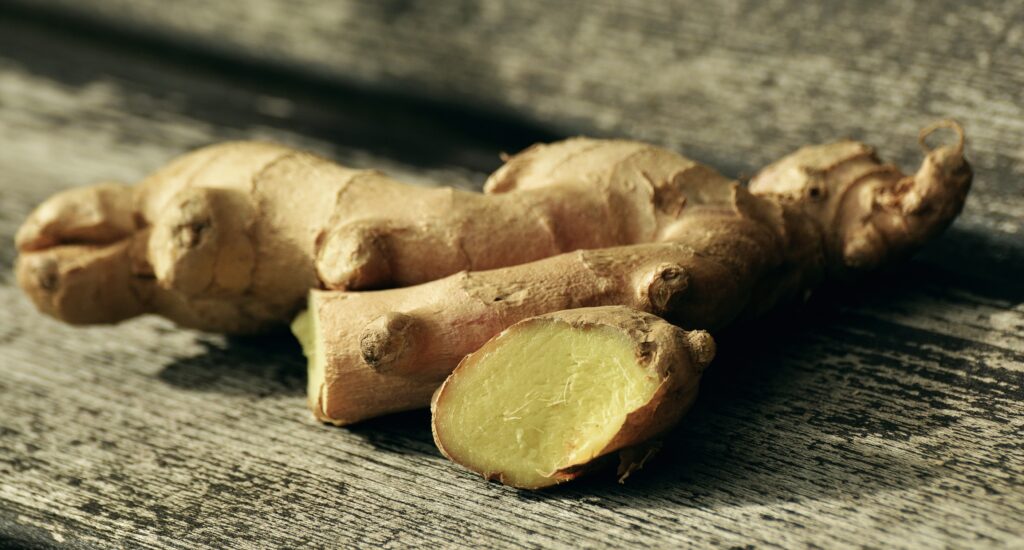
What are the health benefits of ginger?
The humble ginger root, which is so easily found at local grocery stores has impressive nutritional value! Here are
- Anti-Inflammatory Properties: Ginger contains bioactive compounds, such as gingerol, that may help reduce inflammation in the body, potentially benefiting conditions like osteoarthritis.
- Nausea Relief: Ginger has long been used to alleviate nausea, upset stomach and vomiting, making it helpful for motion sickness and pregnancy-related nausea like morning sickness.
- Digestive Aid: Ginger can stimulate saliva production and suppress gastric contractions as food and fluids move through the GI tract, potentially relieving indigestion and discomfort helping with other digestive issues.
- Immune System Support: With its antioxidant and anti-inflammatory properties, ginger may contribute to overall immune system health, helping the body defend against infections.
- Pain-Fighting Power: Some studies suggest that ginger may have analgesic (pain-relieving) properties, potentially helping with conditions like menstrual pain or muscle soreness.
- Lowering Blood Sugar Levels: Ginger may help regulate blood sugar levels, making it beneficial for individuals with diabetes or those looking to manage their blood sugar levels.
- Cardiovascular Health: Ginger may contribute to heart health by reducing blood pressure and cholesterol levels, thus supporting cardiovascular function.
- Anti-Cancer Properties: Some research suggests that gingerol, the bioactive compound in ginger, may have anti-cancer properties and could potentially inhibit the growth of certain cancer cells.
- Anti-Microbial Effects: Ginger may possess antimicrobial properties, helping to combat infections caused by bacteria or viruses.
It's important to note that while ginger shows promise in these areas, individual responses may vary, and it's advisable to consult with a healthcare professional for personalized advice.
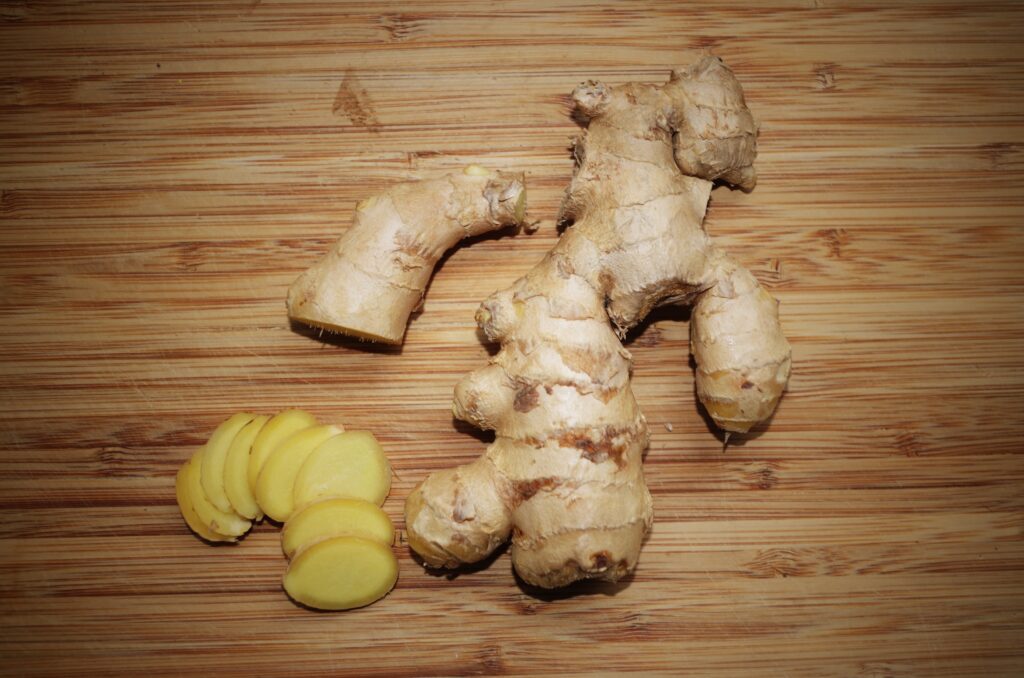
Is ginger peel good for your health? Does ginger peel offer extra health benefits?
The peel of ginger is thin and edible, and it contains some of the same beneficial compounds found in the flesh of the ginger root. Here are some potential health benefits associated with unpeeled ginger:
- Fiber Content: The skin of the ginger contains dietary fiber, which is beneficial for digestive health. Fiber supports regular bowel movements and contributes to a healthy gut microbiome.
- Antioxidant Properties: Like the flesh of ginger, the peel also contains antioxidants, which can help combat oxidative stress and inflammation in the body.
- Vitamins and Minerals: While the concentration may be lower than in the flesh, ginger peel may still contain some vitamins and minerals, contributing to overall nutrient intake.
- Anti-Inflammatory Compounds: Ginger peel, similar to the flesh, contains bioactive compounds with potential anti-inflammatory effects, which may be beneficial for conditions related to inflammation.
- Flavor Enhancement: Including the peel in recipes can add an extra layer of flavor to dishes or beverages, providing a slightly spicier and more intense taste.
However, keep in mind that the peel can have a stronger taste compared to the flesh, and you may find it too pungent. If you enjoy the taste and texture of ginger peel, there's no harm in consuming it, and it can add nutritional value to your meals or drinks. If you find the flavor too strong, you can choose to peel the ginger before use.
Is ginger peel bad for your juicer? What is the best juicer for ginger?
The peel of ginger is thin, and while it is generally safe for many juicers, it may pose some challenges, especially in certain types of juicers. Here are some considerations for when you juice ginger:
- Centrifugal Juicers: These juicers work by rapidly spinning a blade to extract juice. Ginger peel is usually thin enough to be processed by centrifugal juicers. However, depending on the design of the juicer, some pulp from the peel may end up in the juice.
- Masticating Juicers (Cold Press or Slow Juicer): Masticating juicers crush and press produce to extract juice. They are generally more effective at handling ginger peel, and the resulting juice is often smoother. These juicers may be a better option if you prefer to include the peel.
- Twin Gear (Triturating) Juicers: These juicers use two interlocking gears to crush and press produce. They can handle ginger peel efficiently and are suitable for extracting juice with minimal pulp.
While ginger peel is generally safe for juicers, it's a good idea to cut the ginger into smaller pieces to make it easier for the juicer to process. Additionally, always follow the manufacturer's guidelines for your specific juicer model, as some juicers may have limitations on the size or toughness of produce they can handle effectively. If you notice any strain on the juicer motor or difficulty in processing, you may choose to peel the ginger to prevent potential issues when making your homemade ginger juice recipe.
Learn more about the types of juicers and my recommendation for the best juicer.
How do you peel ginger?
Peeling ginger is a simple process, and there are a few methods you can use. Here are two common ways to remove the outer skin of ginger:
- Using the Back of a Spoon:
- Hold the ginger firmly in one hand.
- Take a teaspoon and, using the edge of the spoon, gently scrape the thin skin off the ginger. Start from the edge and work your way around the ginger.
- Continue until all the skin is removed. This method is a very effective way to peel ginger. It is efficient and minimizes the waste.
- Using a Knife:
- Cut off a small piece of ginger from the main root.
- Place the ginger piece on a cutting board and, using the back of a knife, peel away the skin in a downward motion.
- Alternatively, you can use a vegetable peeler to remove the skin of the ginger.
Remember to wash the ginger thoroughly before peeling, and consider using a fresh piece of ginger for optimal flavor and texture. After peeling, you can chop, slice, or grate the ginger based on your recipe requirements.
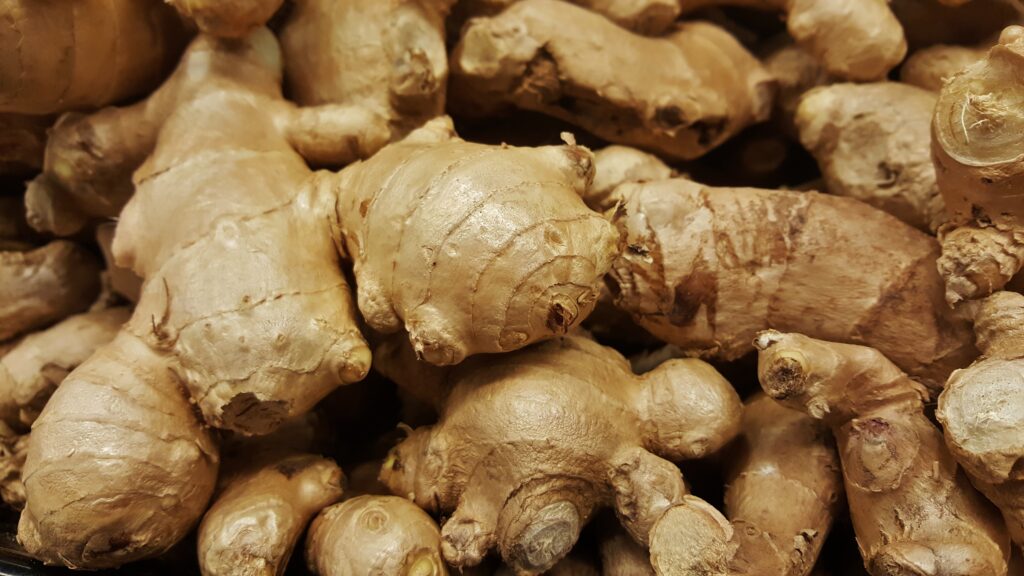
Should you buy organic ginger?
If you are not going to peel ginger, you could organic ginger for your fresh ginger juice recipes. If you decide to opt for conventional ginger, make sure to wash it thoroughly to remove any potential pesticide residues. Additionally, peeling the ginger before juicing can further reduce exposure to any residues on the skin.
Does Peeling Ginger change the juice flavor?
Peeling ginger before juicing can have a subtle impact on the flavor of the juice, but the change is generally minimal. The skin of ginger contains certain compounds, and leaving it on can contribute to a slightly spicier and more intense taste. If you enjoy the robust and peppery flavor of ginger, leaving the skin on can enhance the overall taste of the juice.
On the other hand, peeling ginger removes the outer layer, which might have a milder and smoother taste. This can be preferable for those who find the skin's flavor too strong or want a more delicate ginger presence in their juice.
Ultimately, whether to peel ginger for juicing is a matter of personal preference. Experimenting with both peeled and unpeeled ginger can help you determine which flavor profile you prefer in your juice. Keep in mind that the difference in taste is relatively subtle, and the health benefits of ginger remain regardless of whether it's peeled or not.
What are some uses of ginger peel?
Ginger peel, though often discarded, can be repurposed in various ways. Here are of the uses of ginger peels:
- Infused Beverages: Add ginger peels to hot water or tea to to make a ginger tea or infuse a mild ginger flavor. You can also include other herbs or citrus peels for a refreshing herbal infusion.
- Flavoring Broths and Soups: Toss ginger peels into homemade broths or soups to impart a subtle ginger essence. Remove the peels before serving to avoid any undesirable texture.
- Pickling: Include ginger peels in pickling solutions for vegetables or fruits. The peels can contribute a hint of ginger flavor to the pickled items.
- Candied Ginger Peel: Make candied ginger peel by simmering the peels in a sugar syrup until they become sweet and chewy. These candied peels can be used as a topping for desserts or enjoyed on their own.
- Flavoring Rice or Grains: Add ginger peels to the water when cooking rice or grains for a subtle infusion of ginger flavor.
- Homemade Ginger Syrup: Simmer ginger peels with water and sugar to create a simple ginger syrup. This syrup can be used to sweeten beverages, desserts, or drizzled over pancakes and waffles.
- Potpourri or Simmering Pot: Place ginger peels, along with other aromatic ingredients like citrus peels and spices, in a pot with water. Simmer on the stove to fill your kitchen with a delightful fragrance.
- Composting: If none of the above options appeal to you, ginger peels can be added to your compost bin, contributing organic matter to enrich your soil.
Remember to thoroughly wash and inspect ginger peels before using them, especially if you plan to use them for cooking. Additionally, choosing organic ginger can reduce concerns about pesticide residues if you plan to use the peel.
How do you store ginger?
Storing ginger properly helps maintain its freshness and flavor. Here are some tips on how to store ginger:
- Refrigeration: You can store unpeeled ginger in the refrigerator. Place the whole ginger root in a resealable plastic bag or wrap it in a paper towel and then place it in the vegetable drawer. This can keep ginger fresh for several weeks.
- Freezing: If you don't use ginger regularly, consider freezing it for later use. Peel and chop the ginger into small pieces before freezing. You can either place the pieces in a sealed bag or freeze them individually on a tray before transferring to a bag. Frozen ginger can be grated or sliced without the need to thaw, making it convenient for cooking.
- Dry Storage: If you go through ginger quickly, storing it in a cool, dry place can work. Ensure good air circulation to prevent mold. However, this method is best for short-term storage, as ginger may start to shrivel over time.
- Avoid Moisture: Ginger does not fare well in a humid environment. Moisture can lead to mold growth. Always make sure ginger is dry before storing it.
- Avoid Sunlight: Keep ginger away from direct sunlight, as exposure can affect its flavor and lead to sprouting.
- Fresh Cut End: When storing a cut piece of ginger, store it with the freshly cut end wrapped in plastic wrap or in an airtight container.
Remember that ginger is a root, and its shelf life may vary. Regularly check stored ginger for moldy spots, shriveling, or spoilage. If you notice any issues, trim the affected areas before use.
Juice Recipes with Ginger from Each Healthy Bite
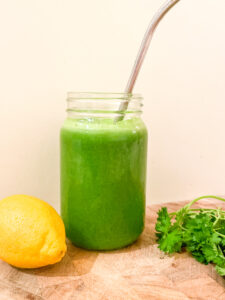
More Information on Juicing:
